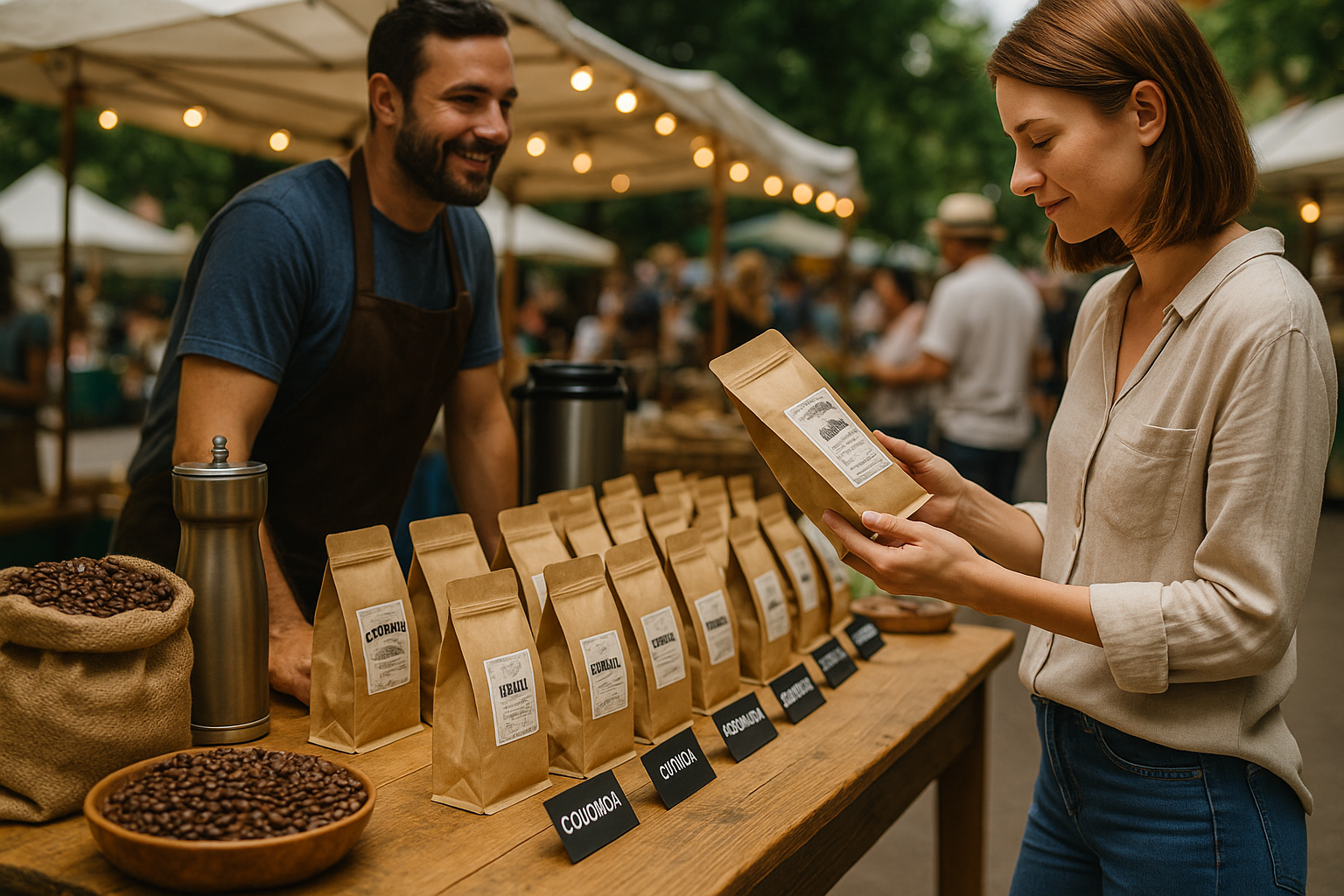For coffee lovers, few experiences are as rewarding as exploring local markets and fairs. Unlike supermarkets, where coffee often comes in generic packaging with little information about freshness or origin, local markets connect you directly with roasters, farmers, and artisans.
Here, you can discover beans with unique flavors, learn about the story behind each harvest, and support small-scale producers who put passion and care into their craft.
Buying coffee in local markets is not only about getting beans—it is about immersing yourself in a culture of quality and authenticity. To make the most of your experience, it is helpful to know what to look for and how to approach your purchase.
Why Choose Coffee from Local Markets?
One of the biggest advantages of market coffee is freshness. Beans are often roasted in small batches just days before being sold, ensuring you get rich flavors and vibrant aromas that supermarket brands cannot match.
When you buy directly from farmers or roasters, your money goes straight to the people who grew or processed the beans. This supports local businesses and communities, making your purchase more impactful.
Markets often showcase specialty beans, single-origin lots, or experimental roasts. These are coffees you may never find in chain stores, giving you the chance to taste distinct profiles that reflect specific regions, climates, and traditions.
Buying from local vendors allows you to ask questions and receive personalized advice. You can learn about roast levels, brewing techniques, and even farming practices directly from the experts.
Key Factors to Consider When Buying Coffee
Always check for the roast date on the package. Coffee is best enjoyed within 2–4 weeks of roasting, when flavors are at their peak. Avoid bags that only show a “best before” date, as these often hide how long ago the beans were roasted.
Arabica beans are the most common in specialty markets, known for their smooth, fruity, or floral profiles. Robusta beans are stronger and more bitter, with higher caffeine content. Some local roasters offer blends that balance both types.
The location where coffee is grown greatly influences flavor. For example:
- Ethiopian beans often taste floral and fruity.
- Colombian coffee is balanced with caramel notes.
- Brazilian beans are nutty and chocolaty.
Asking about the origin helps you understand what flavors to expect.
Roast Level
Roast levels impact the taste as much as the beans themselves:
- Light roast: Highlights fruity and floral notes.
- Medium roast: Balanced, with both sweetness and body.
- Dark roast: Bold, smoky, and intense.
Your choice depends on whether you prefer delicate or robust flavors.
Packaging Quality
Good packaging matters. Look for airtight bags with one-way valves. These allow freshly roasted beans to release carbon dioxide without letting oxygen in, keeping the coffee fresher longer.
Tips for a Successful Market Coffee Purchase
Many vendors brew small samples for customers. Always take advantage of this to test the flavor before committing to a bag.
Since freshness fades, it is better to buy smaller amounts that you can consume within a few weeks. This way, you always have freshly roasted coffee available.
Do not be shy—vendors appreciate engaged customers. Ask about the farm, processing method, or brewing recommendations. The more you know, the better your experience.
Markets usually feature several roasters with different styles. Try buying small bags from multiple vendors to discover which profiles you enjoy most.
Bring Your Own Container
Some markets encourage customers to bring reusable jars or bags. This not only reduces waste but also supports eco-friendly practices.
Advantages Over Supermarket Coffee
- Fresher beans, roasted just days earlier.
- Greater transparency, with information about origin and process.
- Unique selection, including rare micro-lots.
- Direct support for small-scale farmers and roasters.
- Opportunity for education, as you can learn brewing tips from experts.
Making the Most of Your Coffee at Home
Once you buy your coffee, how you handle it at home affects flavor just as much as the beans themselves.
- Grind just before brewing: Ground coffee loses freshness quickly, so invest in a good grinder.
- Store properly: Keep beans in an airtight container away from heat, light, and moisture.
- Match grind to method: Use coarse grinds for French press, medium for drip coffee, and fine for espresso.
- Experiment with ratios: Adjust coffee-to-water ratios until you find your ideal strength.
- Try different brewing methods: Pour-over, Aeropress, or moka pot can reveal different aspects of your coffee.
Final Thoughts
Buying coffee at local markets and fairs is about more than convenience—it is about embracing quality, freshness, and connection.
Each bag of beans tells a story, from the farm where it was grown to the roaster who perfected it. By choosing coffee at markets, you not only improve your daily brew but also support small businesses and sustainable practices.
Next time you visit a market, approach the coffee stalls with curiosity and openness. Ask questions, try samples, and experiment with new flavors. You may discover coffees that redefine what you thought was possible from a simple cup.
